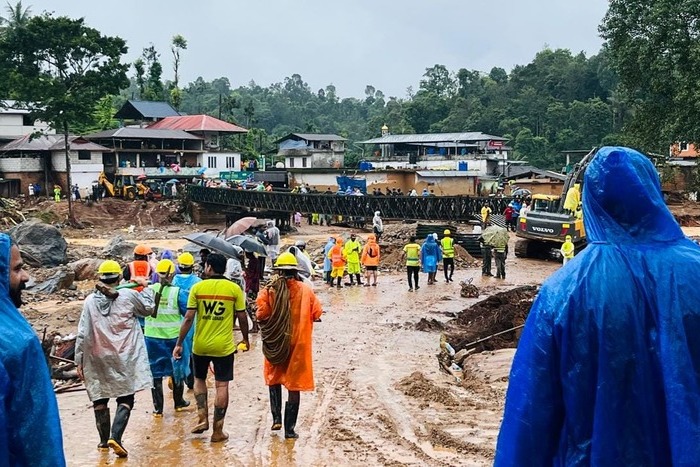The Tala hydropower dam on the Wangchhu river might overflow due to excessive rainfall, which would have devastating consequences downstream, say experts
After wreaking havoc in the Himalayan states of Uttarakhand and Himachal Pradesh, extreme rainfall led to flooding in north Bengal. The resultant landslides affected the districts of Darjeeling and Jalpaiguri badly, claiming up to 24 lives, according to The Hindu.
Calling it a man-made disaster, West Bengal Chief Minister Mamata Banerjee announced compensation, and has planned a visit to the affected areas today.
The situation can get significantly worse. The Tala hydropower dam on the Wangchhu river might overflow due to excessive rainfall, reported the National Centre for Hydrology and Meteorology (NCHM), Bhutan.
The Bhutanese government communicated to the West Bengal government to take precautionary measures, in case the dam overflows. According to the advisory, the dam gates are not opening, which can lead to overflow, resulting in flood like situation downstream.
The National Disaster Response Force has generated the highest level alert for the Bengal district of Alipurduar, which is downstream of the river, according to Down To Earth.
Climate change increases disaster risk
“This year’s unprecedented disasters in the Himalayas reflect a convergence of environmental, climatic, and human factors. Rapid warming at high altitudes has accelerated glacier melt and destabilized permafrost, increasing glacial lake outburst floods (GLOFs) and landslides. More intense and erratic monsoon rains—linked to climate change—have saturated slopes and river systems, triggering flash floods,” said Prof Anjal Prakash, Research Director, Bharti Institute of Public Policy, ISB.
Combined with long-term glacier retreat, deforestation, unregulated construction, road cuts, and hydropower projects, these weaken slope stability and remove natural buffers, he added.
He attributes the unpredictability of extreme weather to climate change. “It is altering the atmosphere–ocean system and amplifying variability across time and space. Higher global temperatures increase evaporation and atmospheric moisture, fueling storms outside their usual seasons and intensifying precipitation,” he said.
Last month, even the Supreme Court observed that “all states in the Himalayan region are facing an existential crisis”, according to a report.
For the current situation unfolding in north Bengal, the overflowing of the Tala dam in Bhutan will lead to large-scale destruction.
“If the Tala Dam in Bhutan were to break, the downstream impact would be severe and potentially catastrophic. The dam is a large hydroelectric project, and a failure could result in a massive flood wave rushing downstream, inundating villages, towns, and agricultural land. The communities in the floodplain are at high risk, and the event could also affect neighboring countries like India, which shares the river basin,” said Prakash, who is also an IPCC author.
While emergency responses are critical in managing such situations, the underlying causes need to be addressed, according to Prakash. There exist solutions.
Strengthening climate adaptation and early-warning systems by investing in high-resolution weather forecasting, glacier and river monitoring, automated GLOF and landslide alarms should be the priority, according to him.
“Restoring forests and wetlands as natural buffers, and integrating hazard maps into permitting are needed. Along with it, enforcing climate‑smart land‑use and infrastructure planning by restricting construction in high‑risk zones, redesigning roads and hydropower projects for geomorphic safety are required,” he said.
About The Author
You may also like
Heatwaves Drove 9% of India’s Power Demand in the Summer of 2024
World Off-Track on Climate Goals as Temperatures are Predicted to Rise: Report
Climate Governance Shows Progress, But Gaps Still Remain 10 yrs After Paris Agreement: Report
A Fifth of Migratory Species Face Extinction from Climate Change: Report
Global Sports Bodies Face Renewed Criticism Over Aramco Ties Amid UN Human Rights Warning

